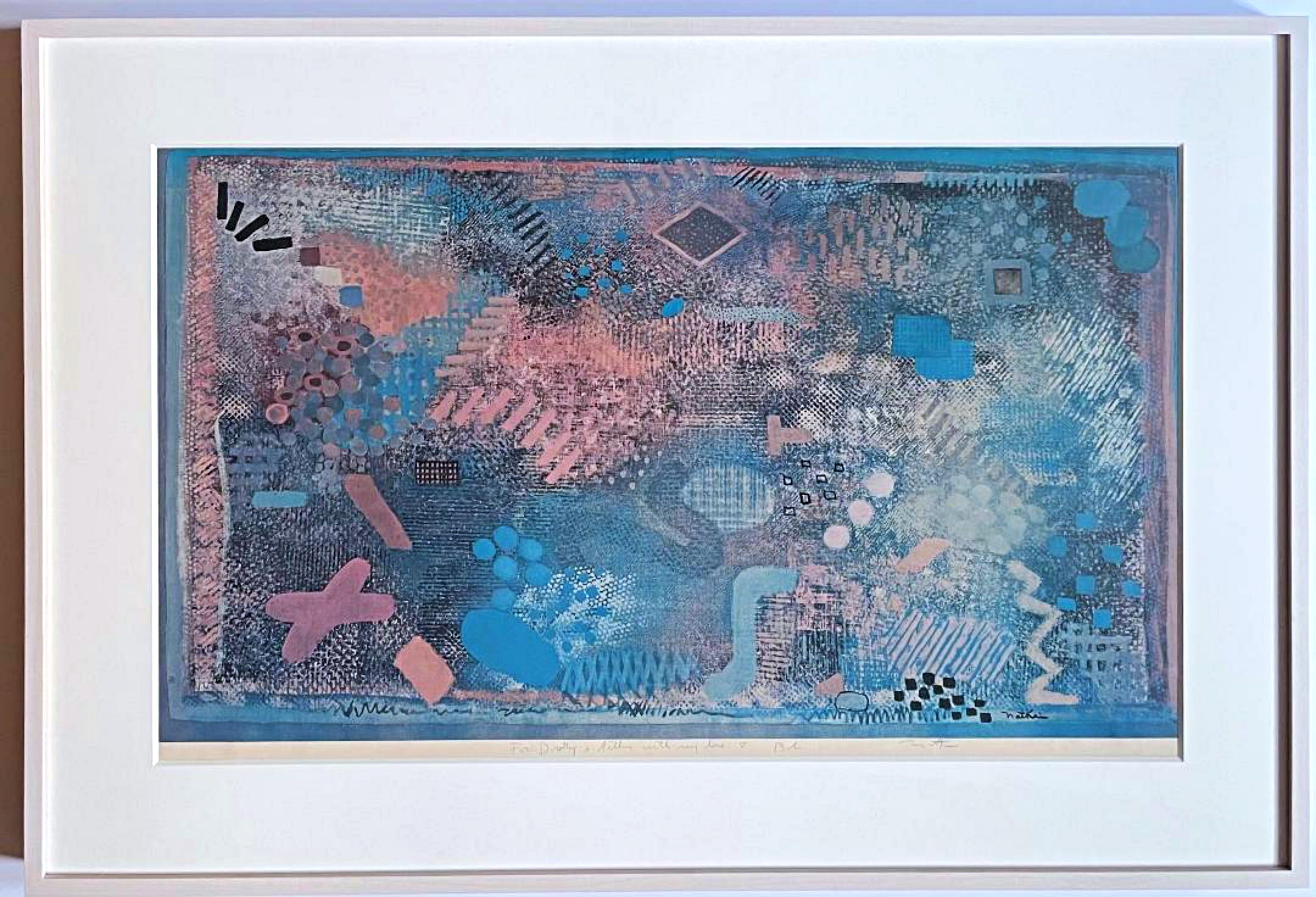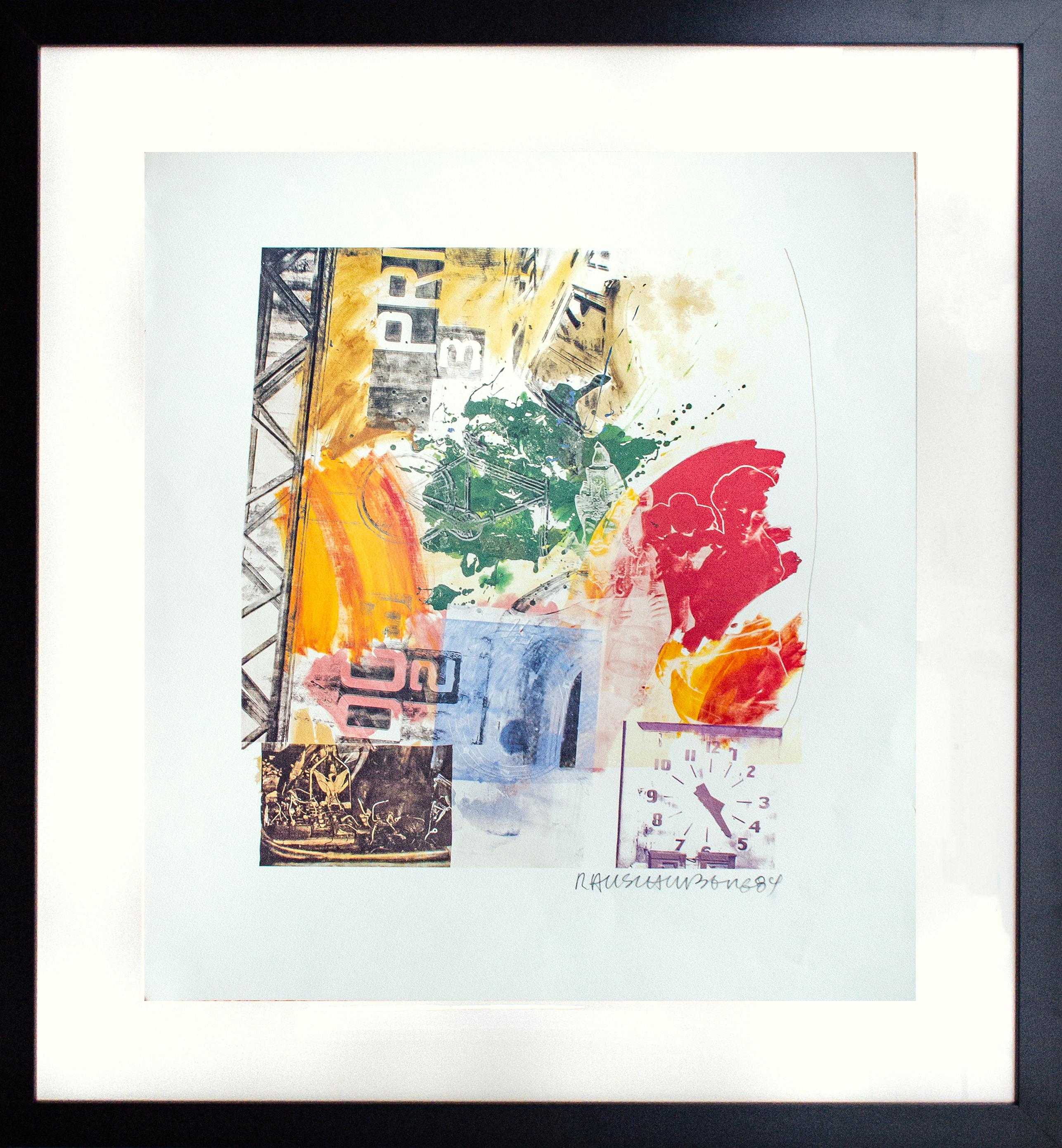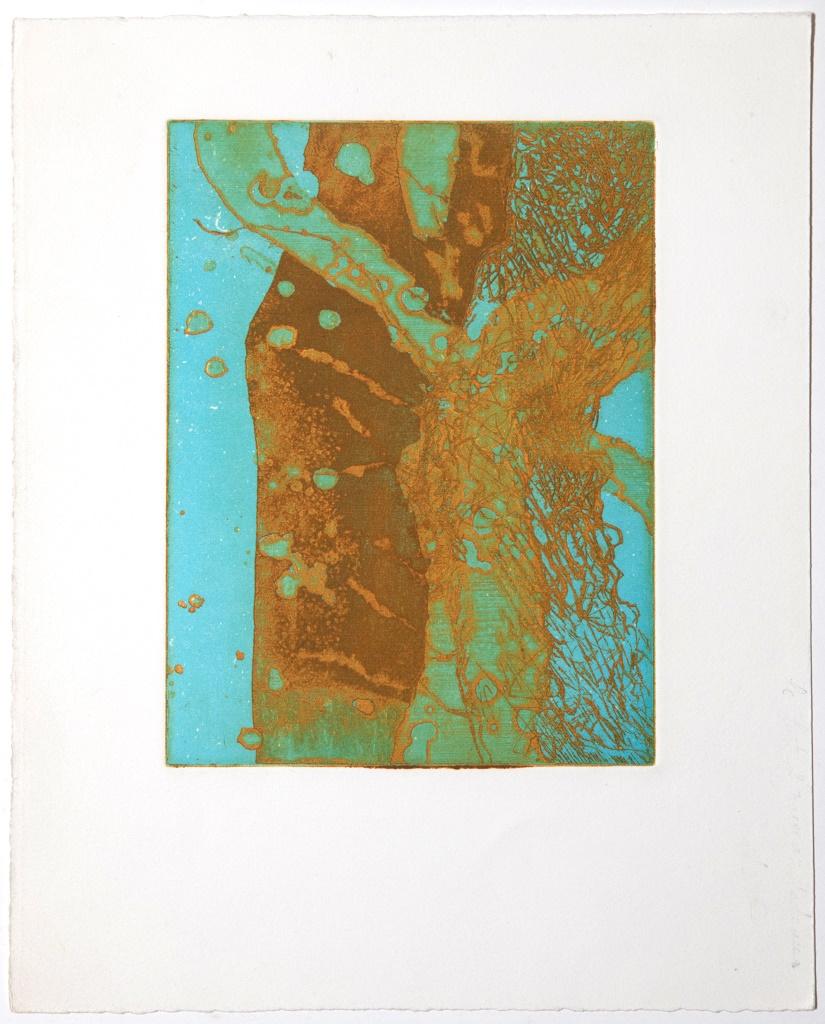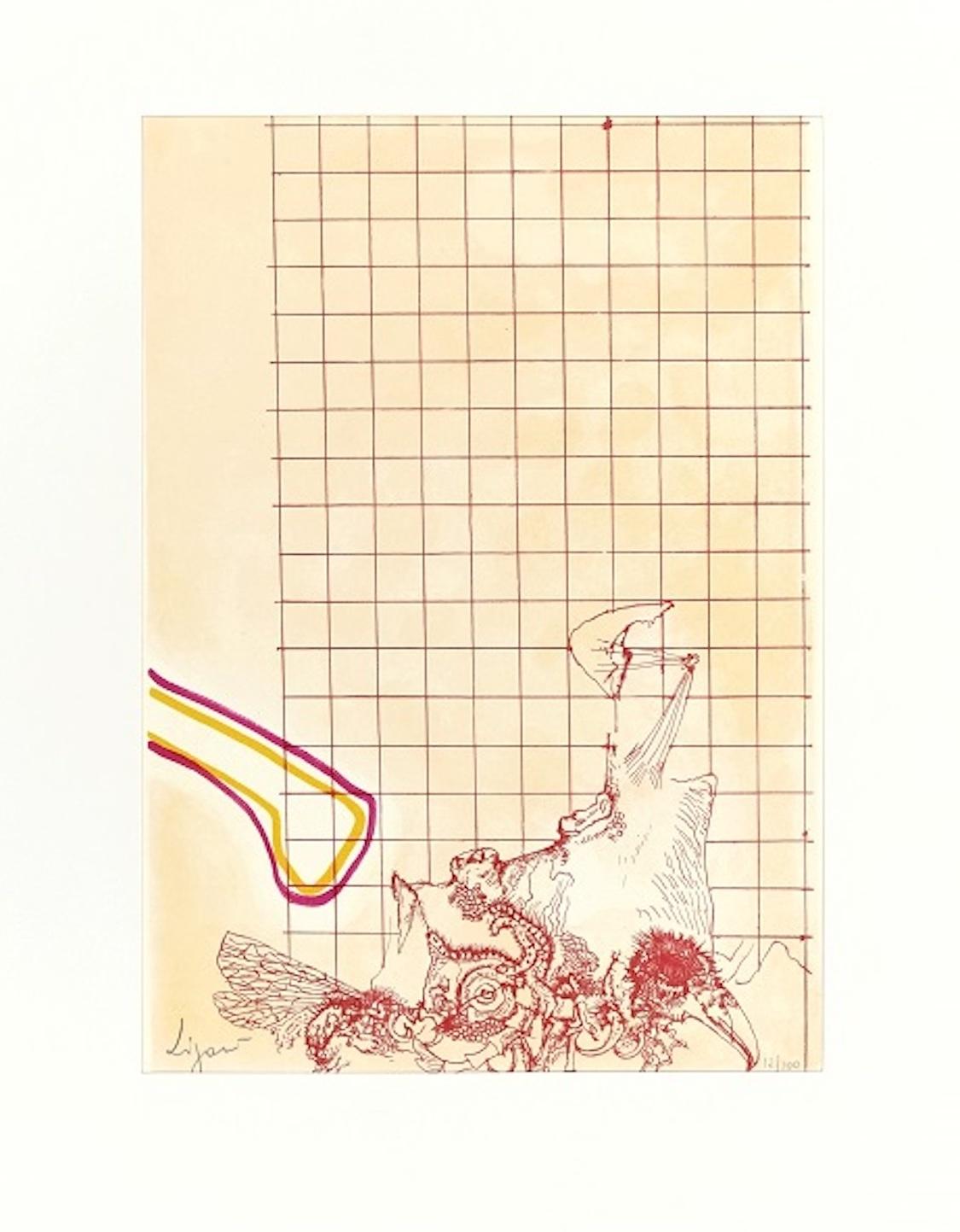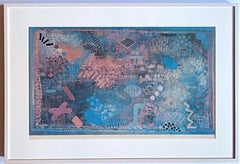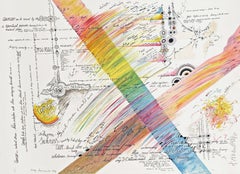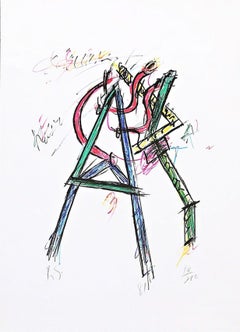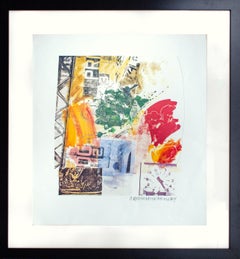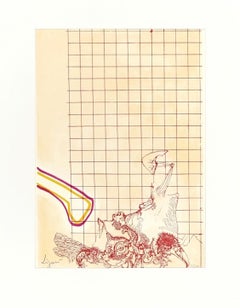Items Similar to Plate Six from Novecento (Mixed media lithograph with chalk pastel), Signed/N
Want more images or videos?
Request additional images or videos from the seller
1 of 6
Nam June PaikPlate Six from Novecento (Mixed media lithograph with chalk pastel), Signed/N1992
1992
$8,800
£6,667.67
€7,650.62
CA$12,383.02
A$13,612.35
CHF 7,154.02
MX$165,303.46
NOK 89,244.66
SEK 84,553.04
DKK 57,098.53
About the Item
Nam June Paik
Untitled, Plate Six from Novecento, 1992
Mixed Media: Color offset lithograph with unique chalk pastel drawing
13 3/10 × 18 inches
Hand signed, Edition 104/130
Pencil numbered 104/130, hand signed in pastel chalk on the front
Edizioni Carte Segrete, Rome, Italy
Excellent condition; held in matting which can be easily removed
The matting measures 18" x 21"
This was part of a series of works produced for the Nam June Paik retrospective at the Palazzo delle Esposizioni, Rome, 1992, Nam June Paik: Arti Elletroniche.
This is one of the editions which bears unique hand coloring with pastel chalk.
A comparable work sold at auction in 2015 for US $12,583. (see details below):
Nam June Paik
Title Novecento
Description Nam June PAI K
Novecento 1930-1940, 1992 Pastel sur offset en couleurs, épreuve signée et numérotée 104/130 Edizioni Carte Segrete, Rome 23,5 x 39,5 cm EH Oeuvre réalisée a l'occasion de la rétrospective Paik au Palazzo delle Esposizioni, Rome, 1992, Nam June Paik: Arti Elletroniche, cinema e Media Verso il XXI Secolo
Medium pastel
Year of Work 1992
Size Height 9.3 in.; Width 15.6 in. / Height 23.5 cm.; Width 39.5 cm.
Misc. Signed
Sale of Millon & Associés: Monday, June 22, 2015 [Lot 00090]
Design
Sold For 11,057 EUR Hammer
(12,583 USD)
Nam June Paik Biography
Nam June Paik was born in 1932 in Seoul. He received a BA in aesthetics from the University of Tokyo in 1956 where he also studied music and art history. After graduating, he studied for a year with composer Thrasybulus Georgiades Georgiades at the University of Munich and for two years with composer Woflgang Fortner at the International Music College in Freiburg. He attended the International Summer Courses for New Music in Darmstadt in 1957, when he met Karlheinz Stockhausen, and in 1958, when he met John Cage. Cage, and through him Marcel Duchamp, had a significant influence on Paik as he became a major force in the avant-garde through performances. In Hommage à John Cage (1959), Paik employed audiotape and performance to attack traditional musical instrumentation and compositional practices, splicing together piano playing, screaming, bits of classical music, and sound effects. Realizing that taped sound was not enough, he decided to move into performance, first by introducing performative actions into his audio works. In 1961 Paik performed Simple, Zen for Head and Étude Platonique No. 3, in which he became a volatile figure, thrashing about in unexpected patterns and sudden movements to his signature soundtracks. In 1962 Paik participated in the Fluxus International Festival of the New Music in Weisbaden. Paik's first exhibition, entitled Exposition of Music - Electronic Television, in 1963 at Galerie Parnass at Wuppertal, launched his transition from composer and performance artist to the inventor of a new art form: an engagement with the material site of television as an instrument. In the exhibition, thirteen televisions lay on their backs and sides with their reception altered; for example, Zen for TV (1963) reduced the television picture to a horizontal line and Kuba TV (1963) shrank and expanded the image on the television set according to the changing volume.
In 1964 Paik traveled to the US. He quickly settled in New York and became a leading innovator among an emerging generation of artists seeking new modes of artistic expression and distribution. That same year, Paik collaborated with Shuya Abe to create Robot K-456 (1964), a remote controlled robot that played audiotaped speeches by John F. Kennedy and defecated beans in Paik's Robot Opera (1964). In the interactive work Magnet TV (1965), Paik invited viewers to modify the television's output into swerving abstract lines through the movement of a magnet over the TV. In 1967 Paik and frequent collaborator Charlotte Moorman were arrested when Moorman performed Paik's Opera Sextronique (1967), a striptease as she played the cello at the Filmmakers' Cinematheque in New York. Paik's TV Bra for Living Sculpture (1969), which Moorman wore in performances, featured two television tubes inside Plexiglas cases taped to her breasts. 9/23/69 Experiment with David Atwood (1969), one of the most important videotape productions of the first decade of video art, contained eighty fluid minutes of image manipulations in the constant process of revelation and transformation. TV Buddha (1974) comprises a statue of Buddha placed in front of a television monitor with a closed-circuit video camera directed from the top of the monitor onto Buddha; Buddha silently observes himself on the screen in an infinite temporal loop. In TV Garden (1974), plants of varying sizes grow out of and amid monitors playing Paik's videotape Global Groove (1973). Video Fish (1975) presents a row of twenty monitors each with a fish tank placed in front of them, playing footage ranging from flying planes and fish to Merce Cunningham dancing.
The fulfillment of Paik's ambitions for a live global satellite broadcast was first realized in Good Morning, Mr. Orwell (1984) and Bye Bye Kipling (1986), featuring a frenetically mixed extravaganza of veterans of the avant-garde and new pop performers. Family of Robot (1986) was the first of Paik's robot sculptures fabricated from vintage televisions and radios, and was soon followed by similar figurative works like Merce (1987) and Catherine the Great (1993). Paik also developed large altars and architectural-scale installations of television monitors in the 1980s and 1990s. In 1996 Paik suffered a stroke, which had a dramatic impact on the pace to which he had become accustomed as a constantly traveling global artist. Nevertheless, in 2000, he created a millennium satellite broadcast entitled Tiger is Alive and in 2004 designed the installation of monitors and video projections Global Groove 2004 for the Deutsche Guggenheim in Berlin.
Major retrospectives of Paik's work have been organized by Kölnischer Kunstverien (1976), Musée d'art moderne de la Ville de Paris (1978), Whitney Museum of American Art in New York (1982), San Francisco Museum of Modern Art (1989), Kunsthalle Basel (1991), National Museum of Contemporary Art in Seoul (1992), and Solomon R. Guggenheim Museum in New York (2000). His work also appeared in important group exhibitions such as São Paulo Biennale (1975), Whitney Biennial (1977, 1981, 1983, 1987, and 1989), Documenta 6 and 8 (1977 and 1987), and Venice Biennale (1984 and 1993). From 1979 to 1995 Paik served as department chair at Staatliche Kunstakademie in Dusseldorf. Paik died in Miami in 2006.
-Courtesy Guggenheim Museum
- Creator:Nam June Paik (1932 - 2006, American, Korean)
- Creation Year:1992
- Dimensions:Height: 13.3 in (33.79 cm)Width: 18 in (45.72 cm)
- Medium:
- Movement & Style:
- Period:
- Condition:Excellent condition; held in matting which can be easily removed.
- Gallery Location:New York, NY
- Reference Number:1stDibs: LU1745213795902
About the Seller
5.0
Platinum Seller
Premium sellers with a 4.7+ rating and 24-hour response times
Established in 2007
1stDibs seller since 2022
451 sales on 1stDibs
Typical response time: 2 hours
- ShippingRetrieving quote...Shipping from: New York, NY
- Return Policy
Authenticity Guarantee
In the unlikely event there’s an issue with an item’s authenticity, contact us within 1 year for a full refund. DetailsMoney-Back Guarantee
If your item is not as described, is damaged in transit, or does not arrive, contact us within 7 days for a full refund. Details24-Hour Cancellation
You have a 24-hour grace period in which to reconsider your purchase, with no questions asked.Vetted Professional Sellers
Our world-class sellers must adhere to strict standards for service and quality, maintaining the integrity of our listings.Price-Match Guarantee
If you find that a seller listed the same item for a lower price elsewhere, we’ll match it.Trusted Global Delivery
Our best-in-class carrier network provides specialized shipping options worldwide, including custom delivery.More From This Seller
View AllAbstract Expressionist monotype (unique), signed and inscribed with heart Framed
By Robert Natkin
Located in New York, NY
Robert Natkin
monotype (unique) on paper
signed in marker on the front
Pencil signed, and inscribed with heart doodle:
"For Dorothy and Arthur with my Love Natkin"
Provenance: collec...
Category
1970s Abstract Abstract Prints
Materials
Monotype
Untitled sculptural lithograph (signed/numbered) by renowned sculptor
By Keith Sonnier
Located in New York, NY
Keith Sonnier
Untitled sculptural lithograph, 1981
Lithograph on watermarked paper
Signed, numbered 159/200 and dated in graphite pencil on the front
Published by Waterstreet Press
...
Category
1980s Post-Minimalist Abstract Prints
Materials
Graphite, Lithograph
Rainbow Signed/N 1970s silkscreen & lithograph, pioneering female Fluxus artist
By Mary Bauermeister
Located in New York, NY
Mary Bauermeister
Rainbow, 1973
Lithograph and silkscreen on creamy white paper
Hand signed, dated and numbered 56/250 by the artist on the front
19 x 25.5 inches
Unframed
This work is on the permanent collection of various institutions like: Rice University, Samuel Dorksy Museum of Art, Rutgers Zimmerli Museum and Wheaton College Massachusetts.
While studying the fringe sciences the 1970s, Bauermeister created Rainbow (1973), a lithograph and silkscreen. She uses a creamy white background as the base. Two intersecting diagonal bands of color transcend across the page, and black cursive lettering dances over the surface serving as a mind map of interweaving ideas. Through the central band, Bauermeister shifts through the color spectrum; she begins with red and finishes with violet. Inspired by music, she uses strokes of color that are rhythmically smeared across the lithograph.
The surface lettering, a kind of visual poetry, explores her interest in human emotion and science. The viewer can see Bauermeister’s thoughts as they flow into one another through the use of words such as bliss, love, and healing. Bauermeister also includes a repetition of words such as cancer, sickness, and cure. The word cancer emerges from a cell-like shape. A careful study of the words shows that they may seem dark in nature; however, she juxtaposes these words against the cheerful title and colors. Perhaps the rainbow symbolizes a new hope, an inspiration for an optimistic future.
-Courtesy to the Samuel Dorsky Museum of Art
About Mary Bauermeister:
A multidisciplinary artist known for her intricate and enigmatic assemblages, Mary Bauermeister (1934-2023) continues to defy categorization with layered works in a range of media. A precursory figure of the Fluxus movement—her studio was the meeting point for a number of defining artists of the avant-garde—her work plays an integral role in the discussion of art, both European and American, that emerged from the 1960s. Her reliefs and sculptures, which have incorporated drawing, text, found objects, natural materials and fabric, reference a plethora of concepts: from natural phenomena and astronomy to mathematics and language, as well as her own “spiritual-metaphysical experiences.” Maturing amidst the currents of Minimalism and Pop Art, Bauermeister’s art has resisted labels due to the singular expression of her interests and concerns, among them the simultaneous transience and permanence of the natural world with experimentations in transparency and magnification, multiplication and variation, structure and order, chance and ephemerality, introversion and extroversion. Her three-dimensional receptacles of thoughts, ideas, and notes contain visual, conceptual, and philosophical paradoxes that challenge perceptions and that offer literal and metaphorical windows into which one can glimpse the inner workings of the artist’s mind.
- Courtesy of Michael Rosenfeld...
Category
1970s Abstract Abstract Prints
Materials
Lithograph, Screen, Mixed Media
Untitled post Minimalist sculptural lithograph by renowned sculptor (signed/N)
By Keith Sonnier
Located in New York, NY
Keith Sonnier
Untitled post Minimalist lithograph, 1981
Lithograph on watermarked paper with publishers blind stamp
Pencil signed, numbered 96/200 and dated on the front
Published by...
Category
1980s Post-Minimalist Abstract Prints
Materials
Graphite, Lithograph
Detail Sketch from January 1986, Pure pigment collage, acrylic painting; Signed
Located in New York, NY
Robert Petersen
Detail Sketch from January 1986, 1991
Pure pigment collage, acrylic painting and drawing
Hand-signed by artist, Hand signed, hand initialed, annotated, dated by hand and with date stamp and stamped by artist and inscribed to Dr. Joseph and Mary Bottino
Provenance: Bottino family
16 1/2 × 21 inches
Unframed
Unique
Robert Petersen is a longtime collaborator, friend and protege of Robert Rauschenberg. Detail Sketch from January 1986, dated by the artist April 20, 1991, as well as April 1, 1991 and April 19, 1991, hand signed, as well as stamped RP several times, inscribed, and bears instructions"can paint over pink and blues and whites", and initialed.
More about Robert Petersen:
Robert Petersen was born in 1945 in the small farm town of Le Mars, Iowa and was raised there until 1952 when he moved with his family to Whittier, California. His education as an artist began in 1963 at Fullerton Community College where his interest in architectural drafting led him to develop a passion for drawing, painting, and printmaking. In 1966, he pursued his love for printmaking further at California State University, Long Beach under the former Tamarind Lithography Workshop printer, Robert Evermon.
In 1969, Petersen went on to work as an assistant printer at Gemini G.E.L. where he printed editions for Frank Stella, Roy Lichtenstein, and Robert Rauschenberg. Most notably, Petersen served as one of the head printers for Rauschenberg's Stoned Moon series, during which the two formed a close friendship. In late 1970, Rauschenberg invited Petersen to live and work with him on Captiva Island, Florida, which had recently become the artist's permanent residence and studio. In 1971, Rauschenberg and Petersen...
Category
1990s Abstract Abstract Drawings and Watercolors
Materials
Graphite, Acrylic, Mixed Media
Wufu Wu, The Five Chinese Blessings Etching on Japanese Kozo paper Signed Framed
By Judy Pfaff
Located in New York, NY
Judy Pfaff
Wufu Wu (The Five Chinese Blessings), 1995
Signed, dated, numbered and titled in graphite pencil on the front
Edition of 120 (unnumbered)
Original etching on Japanese Kozo...
Category
1990s Abstract Abstract Prints
Materials
Etching
You May Also Like
Robert Rauschenberg Signed Lithograph
By Robert Rauschenberg
Located in New York, NY
Robert Rauschenberg
American (1925-2008)
Untitled, for ROCI
offset color lithograph, signed and dated lower right "Rauschenberg 84"
25 3/4 x 22 3/4 in. (sheet)
Framed: 31 1/4 x 29 x...
Category
1980s Post-Modern Figurative Prints
Materials
Lithograph
Abstract Composition - Original Mixed Media Etching on Paper - Late 20th Century
Located in Roma, IT
Abstract Composition is a little mixed media etching realized by an artist of late 20th century.
In good conditions the artwork is mounted on a white cardboard (24x30).
No signatur...
Category
Late 20th Century Contemporary Mixed Media
Materials
Mixed Media, Etching
untitled from St. Gallen, Abstract Expressionist Lithograph by Antoni Tapies
By Antoni Tàpies
Located in Long Island City, NY
Artist: Antoni Tapies, Spanish (1923 - 2012)
Title: untitled from St. Gallen
Year: 1965
Medium: Lithograph, signed and numbered in pencil
Edition: 15/75
Size: 22 x 30 in. (55.88 x ...
Category
1960s Abstract Expressionist Abstract Prints
Materials
Lithograph
Untitled - Original Lithograph by Giuseppe Zigaina - 1970s
By Giuseppe Zigaina
Located in Roma, IT
Image dimensions: 33.2x23.7 cm.
Senza Titolo is a beautiful colored lithograph on paper, realized at the end of XX century by the Italian artist, Giuseppe Zigaina, and publised by L...
Category
1970s Contemporary Abstract Prints
Materials
Lithograph
Abstract Composition - Lithograph by Arman - 1980s
By Arman
Located in Roma, IT
Abstract Composition is a contemporary artwork realized by the French Artist Arman (Armand Pierre Fernandez) in 1980s.
Mixed colored lithograph on paper. Hand signed on the lower ri...
Category
1980s Abstract Abstract Prints
Materials
Lithograph
Untitled - Original Lithograph by Primo Conti - 1971
Located in Roma, IT
Untitled is an original colored lithograph on cream-colored paper realized by the Italian artist Primo Conti (1900-1988).
A beautiful original print, re...
Category
1970s Abstract Abstract Prints
Materials
Lithograph
